|
Banner Image:
Members' Reading Room, c.1940.
196th
Annual Report Available Online
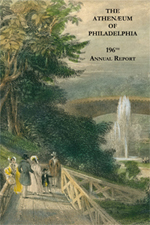 The
196th Annual Report of The Athenaeum of Philadelphia (for Fiscal Year
2010/2011) is now available on the Athenaeum website. The
196th Annual Report of The Athenaeum of Philadelphia (for Fiscal Year
2010/2011) is now available on the Athenaeum website.
View
the Annual Report
Lecture
and Book Signing: Witold Rybczynski, The Biography of a
Building: How Robert Sainsbury and Norman Foster Built a Great Museum
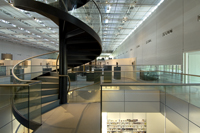 Witold
Rybczynski, one of the world’s most fluent and avidly followed writers on architecture, is the perfect guide to the remarkable inside story of the Sainsbury Centre for the Visual Arts at the University of East Anglia, created for Sir Robert and Lady Sainsbury’s private collection of paintings, drawings and sculptures. The project was Norman Foster’s first public commission and set him on the road to international fame and success. Reception and book signing to follow. Witold
Rybczynski, one of the world’s most fluent and avidly followed writers on architecture, is the perfect guide to the remarkable inside story of the Sainsbury Centre for the Visual Arts at the University of East Anglia, created for Sir Robert and Lady Sainsbury’s private collection of paintings, drawings and sculptures. The project was Norman Foster’s first public commission and set him on the road to international fame and success. Reception and book signing to follow.
Wednesday, February 22, 2012, 5:30 PM
Free for Athenaeum Members. RSVP to Susan Gallo at 215-925-2688 or sgallo@philaathenaeum.org
All others $10, you
may pay online.
Photo:
Sainsbury Centre.
Staff
News
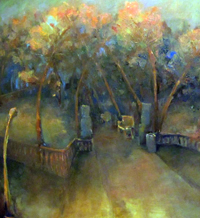 Several
paintings by Membership Secretary Brittany Koch are on display at Prelude
Gallery, 406 S. 20th St. and 3rd St. Gallery, 58 N. 2nd St. Several
paintings by Membership Secretary Brittany Koch are on display at Prelude
Gallery, 406 S. 20th St. and 3rd St. Gallery, 58 N. 2nd St.
For more information visit www.preludegallery.com
or www.3rdstreetgallery.com.
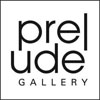 
Above: Detail from "A
Possibility of Rittenhouse," by Brittany Koch.
Artist
Spotlight: Sean Martorana
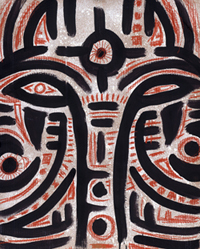 Another
in an ongoing series of profiles of artist customers of the
Athenaeum’s Regional Digital Imaging Center (RDIC)... Another
in an ongoing series of profiles of artist customers of the
Athenaeum’s Regional Digital Imaging Center (RDIC)...
Visual
artist, designer by trade, artist by nature, painter by passion,
collaborator by desire, creative by DNA.
Enhancer of lifestyles, brand designer, marketing maker, identity
describer. This is Sean Martorana.
After more than six years of successfully running THE_STUDiO, a
visual design, marketing and communications firm, Sean Martorana
switched gears to begin building his own artistic and designer brand.
Aside from his own line of paintings, designs and prints, Sean
has been collaborating with other artists and companies to develop
designs in interior décor, clothing, jewelry, watches and other
accessories. His
work has been shown in galleries, featured in national publications and
commissioned by passionate individuals.
He thrives on partnering with like-minded artists, designers and
companies. One
cannot help but be moved by his aggressive symbolism and iconic imagery.
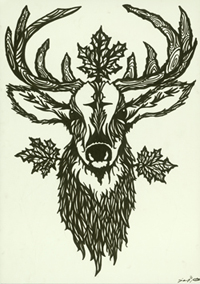 Sean’s
work is inspired by artwork that describes a lot with simple symbolism. “I
like to create things in which the viewer can find their own story
within the lines, shapes and colors.
It is ultimately collaboration between the artist, art and
viewer.” He
uses strategic lines to create movement and energy around the symbolism
and to evoke an emotional response. “My
emotions and those absorbed from others ultimately drive my work.” Sean’s
work is inspired by artwork that describes a lot with simple symbolism. “I
like to create things in which the viewer can find their own story
within the lines, shapes and colors.
It is ultimately collaboration between the artist, art and
viewer.” He
uses strategic lines to create movement and energy around the symbolism
and to evoke an emotional response. “My
emotions and those absorbed from others ultimately drive my work.”
Sean
found the Athenaeum through an extensive search for large-format,
high-quality scanners in Philadelphia. “I
found nothing that came close to the size or quality that the Cruse
Scanner could give me. I
wanted the quality to be nice enough so that I could sell detailed
prints of my artwork without having to scan it in pieces and stitch the
image together with Photoshop afterward. The
Athenaeum’s Imaging Center gave me that. They are a pleasure to work
with and are very flexible with scheduling which is a HUGE help to me
with my hectic spontaneous schedule."
Visit
Sean’s website at: www.seanmartorana.com
or www.facebook.com/inthestudio
Top:
"Hypnotic Penetration" by Sean Martorana.
Bottom: "Cervidae Spirit" by
Sean Martorana.
Member
Critics
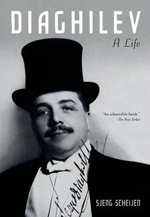 Diaghilev-A
Life, Sjeng Scheijen, translated from Dutch by Jane Headly-Próle and S.J. Leinbach, Oxford University Press, 2009. Diaghilev-A
Life, Sjeng Scheijen, translated from Dutch by Jane Headly-Próle and S.J. Leinbach, Oxford University Press, 2009.
Reviewed
by Stephen Greenberg.
A genius, a giant, irreplaceable, boundlessly charming with indomitable strength, terrible and significant, a wizard, a sorcerer, an awful person, Louis XIV, an ogre, a sacred monster---these are only some of the words used by those who knew and worked with Serge Diaghilev (1872-1929) to describe him. But, certainly, giant is an indisputably correct description of him. He was the father of modern dance and the grand incubator of early twentieth century European modernism—the stuff of myth and legend. Just consider the list of giants with whom he collaborated and whose careers he helped advance. In dance: Nijinsky, Mikhail Fokine, Anna Pavlova, Tamara Karsavina, Leonide Massine, Balanchine. In music: Stravinsky, Rimsky-Korsakov, Prokofiev, Ravel, Debussy. In art, design and costume: Leon Bakst, Picasso, Cocteau, Coco Chanel, Braque, Matisse. There are many others who could be mentioned.
He was a great innovator. His 1912 production of the Afternoon of the Faun in Paris, with choreography by Nijinsky, music by Debussy and sets and costumes by Bakst, caused a riot at its premiere; today it is considered a landmark in modern dance and design. The dance company that he founded in 1909 and led until his death, Ballets Russes, introduced many of the foremost classics in modern dance, including
Le Sacre du printemps, Parade, Les Noces, The
Firebird, Petrushka, and Le Pas d’ acier, as well as the aforementioned
Afternoon of the Faun.
Serge Diaghilev, the force behind all of this, was born into a Russian family of the minor nobility that supported itself through military service and a royal warrant to produce vodka in Perm, a provincial town at the foothills of the Urals. Diaghilev was educated as a lawyer at the university in St. Petersburg, and was expected to join the royal bureaucracy. However, his interests were always artistic. His first career was as a composer, but after being told by Rimsky-Korsakov that he had no talent for composition, he abandoned music for a career as a critic and the publisher of a magazine about modern trends in the Russian arts. Eventually, he found his life’s work as a producer and impresario of opera, theater, and most importantly, dance. He left Russia at the beginning of World War I, never to return (but not for lack of trying, especially after the Bolsheviks came to power), and he found fame and renown in the capitals of Europe—Paris, London, Berlin and Rome—as a producer of the new and sometimes shocking. His life can only be described as chaotic. He was constantly broke and on the verge of bankruptcy. Even though the Ballets Russes had its headquarters in Monte Carlo, Diaghilev had no permanent address, preferring to live in various hotels. If he would have called any place home, it would have been Venice, which he loved and where he is buried.
Scheijen’s biography is long (over 500 pages including notes) and comprehensive. I cannot imagine that there is any detail in Diaghilev’s life that he missed, including Diaghilev’s many homosexual romances and relationships. However, because Diaghilev’s homosexuality is important to an understanding of him as a person and as an artist, the book cannot be faulted for including these details for the purpose of sensationalism.
One would think that a biography of such a fascinating and important character as Diaghilev would be easy reading. Unfortunately, I found the book to be a difficult slog. The most I could read at any one sitting was about twenty-five pages before I found my mind wandering. It is not because the writing is poor. I do not have any idea how the book read in the original Dutch, but the English translation reads quite well. Maybe it was because so many long passages of letters and newspaper articles about long-ago and hopefully long forgotten petty disputes are included. I found it difficult to become very interested in why, in 1911, a certain composer had a personality clash with a particular choreographer over a petty slight. This is a book that could use about fifty pages of good editing.
Despite this criticism, I learned a great deal from Scheijen’s biography about the development of modern dance and art, and there are many very interesting portraits, both written and drawn, of the seminal figures of European modernism. If you are up for a long read about fascinating people and their contributions to how we experience art today, by all means, read this book.
Do
you have a book that you loved (or hated), and would you be willing to
share that opinion in the Athenaeum e-newsletter? If so, please
send your short essay to sltatman@philaathenaeum.org.
Hours:
Monday-Friday:
9:00am-5:00pm
First
Saturdays: 11:00am-3:00pm (excluding the summer months)
 Location: Location:
219
S. 6th Street
Philadelphia,
PA 19106
The
building is accessible to persons with disabilities.
Group tours and
research visits are by appointment only.
The
Athenaeum does not share this mailing list.
You
can Subscribe
or Unsubscribe
at the Athenaeum website.
To
read past issues, visit the
Newsletter
Archive.
|

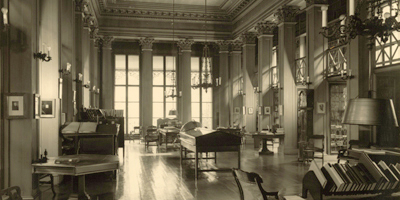

 Witold
Rybczynski, one of the world’s most fluent and avidly followed writers on architecture, is the perfect guide to the remarkable inside story of the Sainsbury Centre for the Visual Arts at the University of East Anglia, created for Sir Robert and Lady Sainsbury’s private collection of paintings, drawings and sculptures. The project was Norman Foster’s first public commission and set him on the road to international fame and success. Reception and book signing to follow.
Witold
Rybczynski, one of the world’s most fluent and avidly followed writers on architecture, is the perfect guide to the remarkable inside story of the Sainsbury Centre for the Visual Arts at the University of East Anglia, created for Sir Robert and Lady Sainsbury’s private collection of paintings, drawings and sculptures. The project was Norman Foster’s first public commission and set him on the road to international fame and success. Reception and book signing to follow. Several
paintings by Membership Secretary Brittany Koch are on display at Prelude
Gallery, 406 S. 20th St. and 3rd St. Gallery, 58 N. 2nd St.
Several
paintings by Membership Secretary Brittany Koch are on display at Prelude
Gallery, 406 S. 20th St. and 3rd St. Gallery, 58 N. 2nd St.


 Diaghilev-A
Life, Sjeng Scheijen, translated from Dutch by Jane Headly-Próle and S.J. Leinbach, Oxford University Press, 2009.
Diaghilev-A
Life, Sjeng Scheijen, translated from Dutch by Jane Headly-Próle and S.J. Leinbach, Oxford University Press, 2009. Location:
Location: